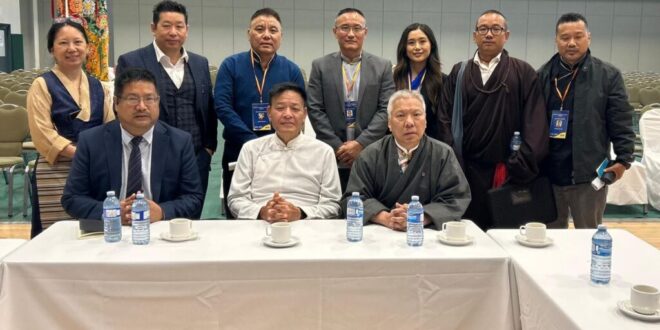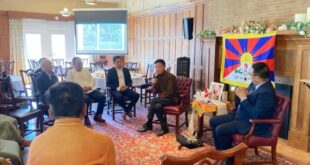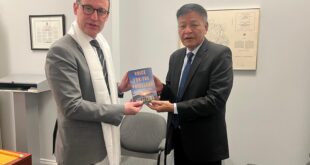Dharamshala: On 18 May 2025, Sikyong Penpa Tsering visited the Tibetan Language and Culture School of the Tibetan Canadian Cultural Centre (TCCC) to address the students there.
The event began with a briefing of the school’s annual report by its Principal, who also detailed upcoming programmes.
In his keynote speech, Sikyong remarked, “This school owes its success in large part to the unwavering support of the Canadian Tibetan Association of Ontario. Despite the numerous responsibilities the Association shoulders, it has generously undertaken this initiative on a voluntary basis, without financial compensation. Their dedication has been instrumental in bringing the school to its current standing. I extend my heartfelt gratitude to the executive committee, as well as the broader membership of the Association, for their commendable efforts.”
Sikyong also expressed his gratitude to the parents who recognise the importance of preserving the Tibetan language and Buddhist values, and who entrust the school with the education of their children. He also acknowledged the principal and faculty members for their devoted guidance and care in nurturing the students.
Following this, Sikyong addressed the current situation in Tibet, highlighting a concerning issue of Tibetan children speaking Chinese at home and losing familiarity with the Tibetan language. He emphasised that, as Tibetans living in free countries, it is our collective responsibility to preserve and promote our language and script. In this regard, Sikyong mentioned that Tibetan is one of the world’s 15 oldest dialects with a script, according to experts. He also highlighted the creation of a 223-volume extensive Tibetan dictionary, an initiative spearheaded by the Monlam Tibetan Information Technology Research Center.
Sikyong stressed that it is not enough to merely acknowledge the importance of the Tibetan language; we must actively use it in our daily lives. He particularly emphasised that, in internal interactions, Tibetans must communicate in Tibetan to ensure the language’s preservation.




